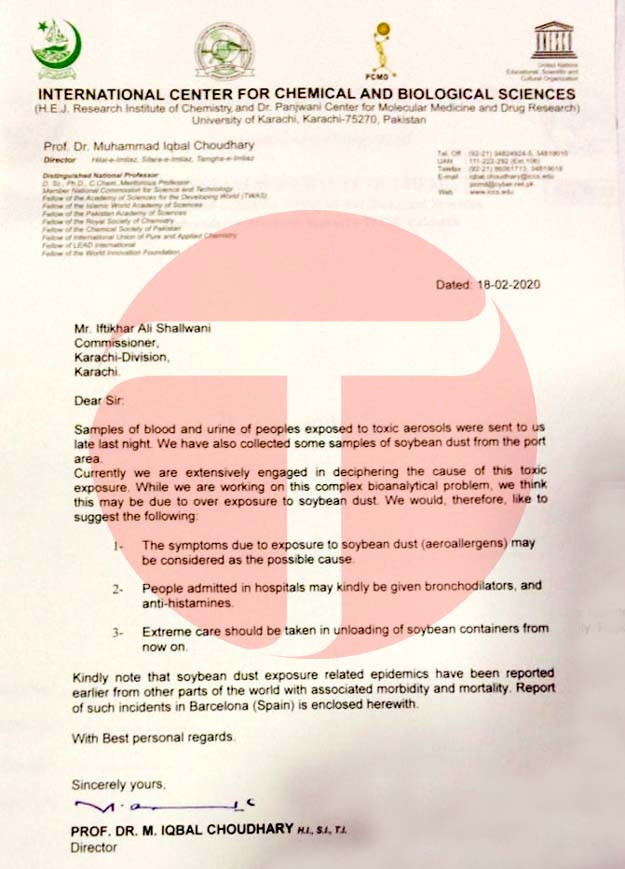
KARACHI: A preliminary report submitted by the International Centre for Chemical and Biological Sciences (ICCBS) at the Karachi University suggested that the Keamari gas incident, which has claimed at least 14 lives, happened due to "overexposure of soybean dust".
The mysterious gas has thus far affected over 400 people who have complained of experiencing breathing difficulties, stomach ache and itching in the throat after inhaling the toxic gas.
According to the report, soybean dust related epidemics have already been reported earlier in different parts of the world associated with “morbidity and mortality”.

It also suggested that authorities concerned should take extreme care in unloading the soybean container.
The report was sent to Karachi Commissioner Iftikhar Shallwani by Dr Muhammad Iqbal Choudhary, the director of ICCBS, based on the blood and urine sample of the affected people. The experts also collected soybean dust samples from the port area, according to the report.
In view of the initial findings, the experts proposed that “Bronchodilators and ant-ihistamines” should be given to the patients of toxic gas exposure.
Meanwhile, Sindh chief minister’s adviser Murtaza Wahab has also confirmed the findings of the report on his twitter handle.
Preliminary report has been submitted by experts at Khi Uni which suggests that Keamari incident happened due to over exposure of soybean dust which is known to have also caused similar incidents in other parts of the world. This soybean is in a shipment docked at Khi Port
— Murtaza Wahab Siddiqui (@murtazawahab1) February 18, 2020
Reacting on the ICCBS report, All Pakistan Solvent Extractors’ Association (APSEA) has described the findings as “baseless and unsubstantiated”.
In a detailed statement, the association said it was out of question that the soybean could be the possible reason for the spread of toxic gas, claiming that the first case of such incident reported before the soybean vessel even discharged from the port.
It said that the US origin soybean is of highest quality and was shipped after going through usual stringent quality tests by the US Department of Agriculture (USDA).




















































COMMENTS
Comments are moderated and generally will be posted if they are on-topic and not abusive.
For more information, please see our Comments FAQ